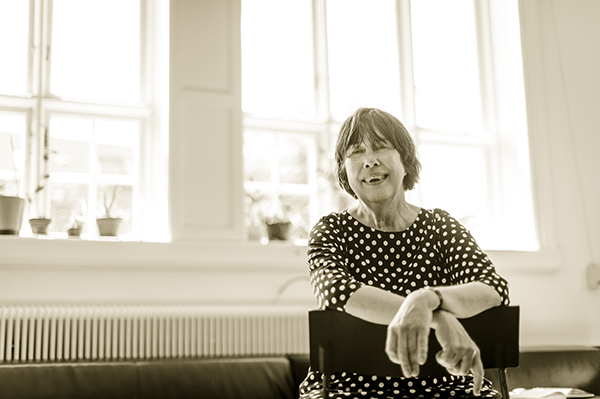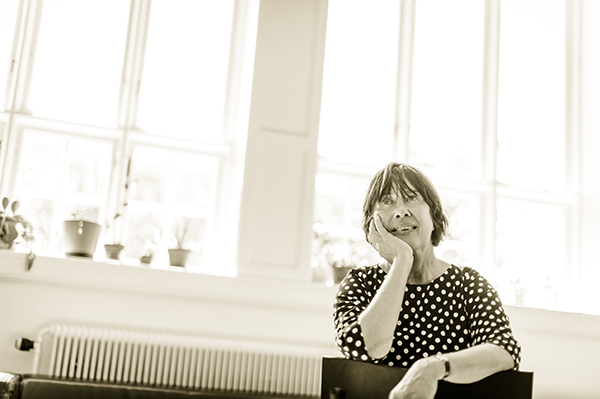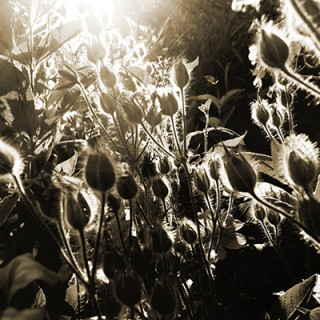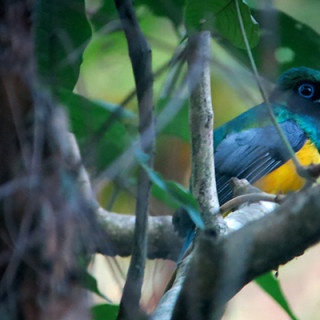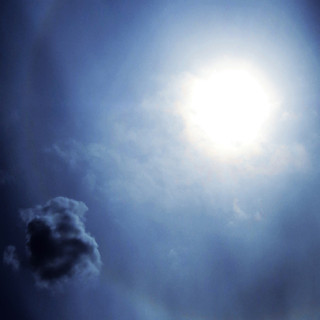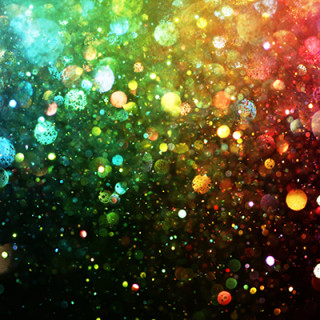Colours that depict light
Column: Gertrud Sandqvist, Professor of the Theory and History of Ideas in Visual Art at Lund University, 2015
The central perspective was invented some 600 years ago by artists both North and South of the Alps to make angels seem more authentic – a method to create the illusion of depth in paintings, using geometric constructions and parallel lines. At the same time, Flemish painters were discovering that by mixing pigment with linseed oil one could create colour that depicted light. The light in the painting created illusion, turning the image into a kind of mirror rather than a message.
Too much knowledge about light and illusion could be dangerous. Jan van Eyck and the other Renaissance painters presumably had access to specially cut glass lenses, with which they could make the light stay on the wall, that is, create a light projection that they could paint from, much like how artists today often paint from photographs. The lenses were given to them by monks who were interested in white and black magic. Depending on the atmosphere around the papacy at the time, these monks were sometimes accused of black magic and executed. Painters, for obvious reasons, were therefore silent about their precious, secret and magical aids which allowed them to control the images of the world they received by having the light refract through a lens.
Artist David Hockney spent decades researching before he uncovered the secret of the Renaissance painters. He discovered that they – from Eyck to Caravaggio – must have had access to the lenses because their style of drawing and painting did not originate from what Hockney called “eye-balling”, that is, using only their eyes and their pencil to see and reproduce the world. Hockney discovered the Renaissance master painters’ well-kept secret by being a master draughtsman himself.
Reproduced light in thousands upon thousands of paintings reflects the world, both as it is and as it could be. The velvety shimmer of a dress and the lacy collar around a beautifully complexioned neck demonstrate preciousness, the exquisite objects of the owner. Forever – and for us – it depicts the happiness and wealth of the portrayed. Being able to capture the soft fuzz of a peach and the deep lustre of grapes in a still life demonstrate the artist’s skills – she or he gives us an illusion rather than a reality. We often prefer the illusion.
Tracing the history of sunlight in the arts necessarily includes mentioning photography – this magical invention that allows light and shadow to be fixed on a glass plate. The first photographers were artists, often portrait or miniature painters who were fascinated by the possibilities of this new technology. Photography was thus in some ways the logical consequence of the central perspective and linseed-oil-based paint. Through photography, artists turned away from the depicting qualities of painting, thus also in a way the interest in light. The impressionists became the last light painters.
Today we have James Turrell, an American artist who is only interested in light, and whose constructions and installations are solely about giving the participant/viewer an experience of light. Spending a summer night in his recently erected Skyspace in Sweden and enjoying the play of colours when the sun slowly goes down can only be described in one word: wonderful. No more making angels credible; the world itself becomes magical.
Facts
-
Jan van Eyck
-
Jan van Eyck, born in 1390, a Flemish artist who represents the height of North European painting before 1500, through technical virtuosity, realistic depictions and bright colours, completed in oil paint.
-
Michelangelo Merisi da Caravaggio
-
Michelangelo Merisi da Caravaggio, born in approximately 1573, an Italian painter who founded a “style-less”, realistic school alongside the Baroque and Classicist schools of the 1600s, based on a dramatic arrangement of direct reality study, e.g. with the help of “spotlights”.
-
David Hockney
-
David Hockney, born in 1937, British painter, draughtsman and printmaker, currently also illustrator, scenographer and photographer. To learn more about how Hockney discovered the artists’ secret, read his book The Secret Knowledge.
-
James Turrell
-
James Turrell, born in 1943, American artist who has created permanent light installations on every continent. A permanent piece by Turrell – Skyspace – with a hole up towards the sky, was created at the Anthroposophy Centre in Järna in 2011.


